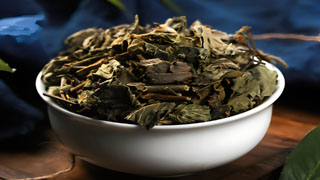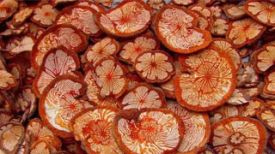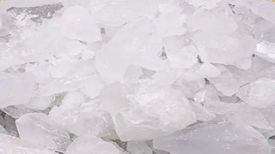
1. Aliases
Yangmei, roadside yellow, fragrant chicken return, Nanbu Zheng, Phoenix Nest, Old Snake Sao.
2. Plant morphology
Roadside green: a perennial herbaceous plant, measuring 40-90 centimeters in height, covered entirely with long bristles. The main root is shortened, with many fibrous roots, brown in color. The stem is upright and cylindrical. Basal leaves are clustered, with long stalks, pinnate or nearly pinnate compound leaves, with the largest apical lobe, rhombic ovate to broadly ovate, 5-10 cm long and 3-10 cm wide, 3-lobed or notched, acute at the apex, cuneiform or nearly heart-shaped at the base, with large serrations on the edges, sparsely growing setae on both sides, small lateral lobes, 1-2 pairs, ovate or obovate, with irregular coarse teeth at the edges. Stem leaves alternate, ovate 3-lobed or pinnate, with 1 pair of ovate or obovate stipules at the base. The flower has a solitary stem tip, 5-lobed sepals, pointed lobes at the tip, and lanceolate accessory sepals. The corolla is yellow, with a diameter of 10-15 millimeters. The petals are 5, wide ovate to nearly circular, with a round apex. Both stamens and carpels are numerous. Aggregated achenes nearly spherical, with persistent styles with long hooked spines at the apex. The flowering period is summer. Soft haired roadside green: a perennial herb. The stem is upright, up to 60 centimeters tall, covered with yellow pubescence and coarse hard hairs. The basal leaves are large feathered compound leaves, with 1-2 pairs of leaflets. The lateral leaflets are in the shape of appendages, while the terminal leaflets are ovate or broadly ovate, 3-8 centimeters long. The apex is blunt and round, and the base is wide heart-shaped or wedge-shaped, shallow or not cracked, with coarse teeth. Both sides are green, sparsely covered with rough hairs. The upper stem leaves are single leaves. The inflorescence is scattered. The flower has a diameter of 1.5-1.8 centimeters, and the pedicels are densely covered with coarse hard hairs and short pubescence. The sepals are triangular ovate, and the petals are yellow and nearly circular. The style is terminal, twisted at the upper 1/4, and the twisted leaves fall off afterwards. The aggregated fruit is oval or ellipsoidal in shape, and the achene is covered with hard hairs. The fruit support is covered with hard hairs, and the hairs are 2-3 millimeters long. The flowering and fruiting period is from May to October.
3. Origin distribution
Roadside green: grows on the edge of forests, by the water, and in the grass on mountain slopes. Distributed in Northeast, North China, Northwest, Central South, and Southwest regions. Soft haired roadside green: grows on mountain slopes, grasslands, fields, rivers, shrubs, or sparse forests at an altitude of 200-2300 meters. It is mainly produced in Shandong, Henan, Anhui, Jiangsu, Zhejiang, Fujian, Jiangxi, Hubei, Hunan, Guangdong, Guangxi, Guizhou, Yunnan, Xizang, Sichuan, Shaanxi, Gansu and Xinjiang.
4. Harvesting and processing
Harvest during spring when flowers bloom, remove sediment, and dry in the sun.
5. Characteristics of medicinal herbs
It is 20-100 centimeters long. The main root is short, with many fine roots and a brownish brown color. Stem cylindrical, hairy or nearly hairless. Basal leaves have long stalks, pinnately divided or nearly pinnately compound leaves, with larger apical lobes, ovate or broadly ovate, with large serrations at the edges, and both sides covered with hairs or almost hairless; Small lateral lobes with irregular coarse teeth at the edges; Stems and leaves alternate, ovate, 3-lobed or pinnately divided. The flowers are terminal and often fall off. Aggregated achenes are nearly spherical. Mild qi, slightly spicy and bitter taste.
6. Nature, taste, and meridian tropism
Cold in nature, sweet and slightly bitter in taste. Guigan Meridian, Spleen Meridian, and Lung Meridian.
7. Effect and function
Nourishing Qi and strengthening the spleen, nourishing blood and yin, moistening the lungs and resolving phlegm. A tonifying yin medicine classified under the category of tonifying deficiency medicine.
8. Clinical applications
Dosage: 9-30 grams. Treat deficiency of qi and blood, deficiency of tuberculosis and cough, and spleen deficiency with diarrhea.
9. Pharmacological research
Research has shown that blue cloth has various pharmacological effects such as anticoagulation, antihypertensive, anti-inflammatory, anti-tumor, and the treatment of ischemic diseases.
10. Chemical composition
Leaves and stems contain more than 20% carotene and tannin. The root contains aromatic bitter substances and volatile oil (0.4%), and the main component in the oil is eugenol. The root contains 0.15% salicylic acid and when heated with dilute acid, it decomposes into eugenol, glucose, and L-arabinose. The inflorescence contains 1.94% flavonoids, and the seeds contain 23.05% fatty oil, which is a dry oil.
11. Taboos for use
Not yet clear, use medication with caution.
12. Compatibility prescription
① Treatment for body weakness and dizziness: Take 15g of blue cloth, 10g of peach grass, and 1 pig foot stewed together for oral use. (Miao Medicine)
② Treating deficiency and weakness: 15 grams each of blue cloth and burdock roots, 9 grams each of bamboo roots, 6 grams of sand kernels, stewed meat for weakness, soaked in wine for fatigue. (Color Atlas of Herbs)
③ Treatment of boils: Apply an appropriate amount of fresh blue cloth, mash it and apply it externally. (Guizhou Herbal Medicine)
The content of the article is for clinical reference only. Non professionals in traditional Chinese medicine are not allowed to try medication.


